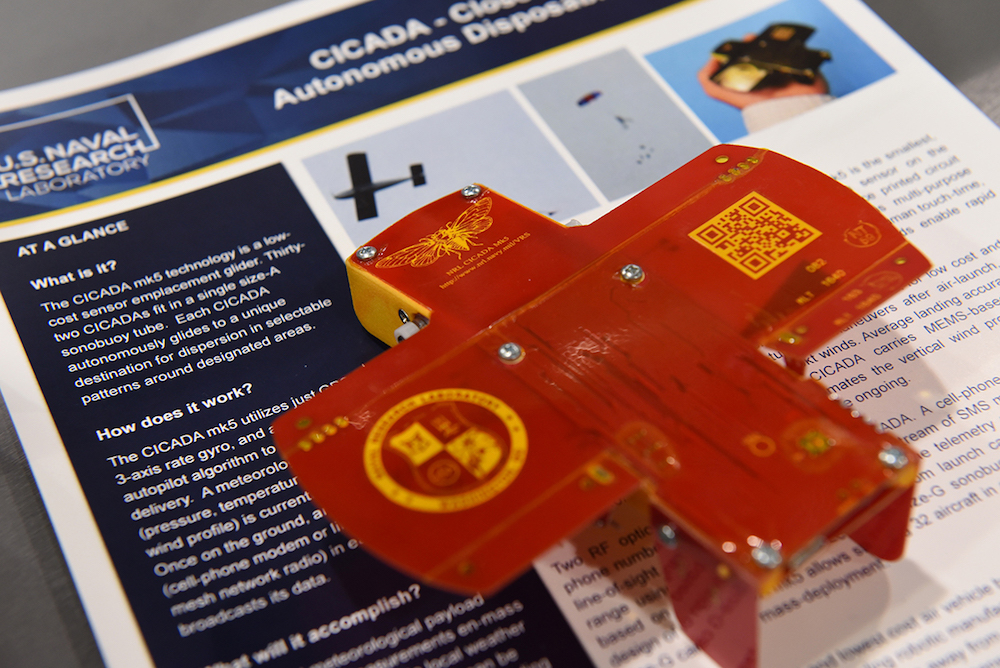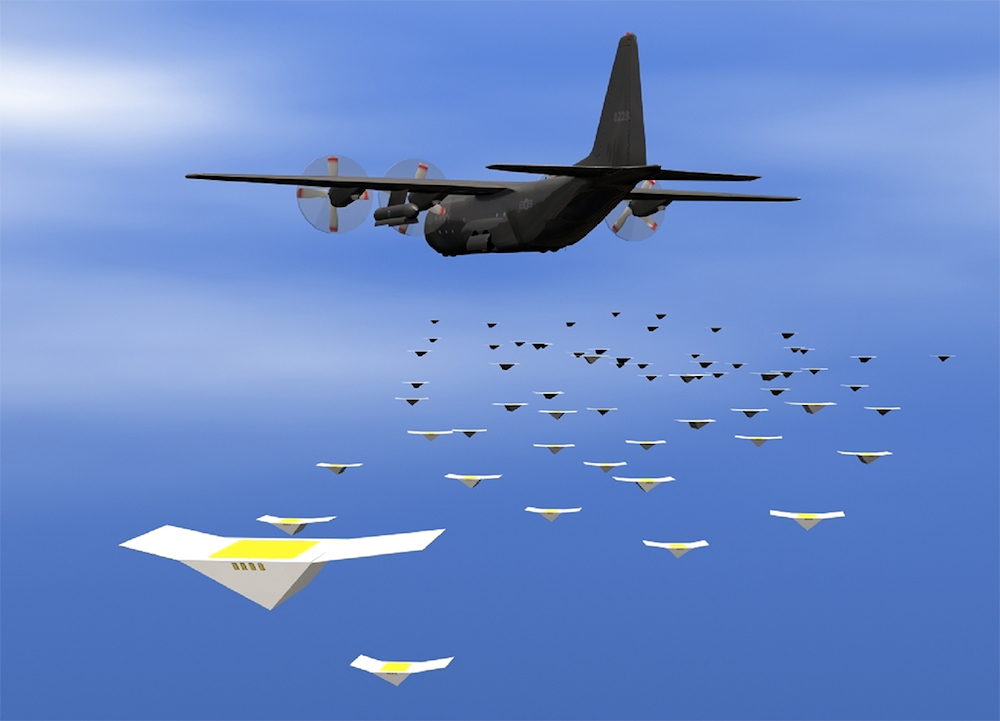Swarms of CICADA Drones Could Aid Hurricane Research

Researchers are developing a tiny, gliding drone that can be dropped from airplanes to gather data directly from hurricanes, and these teensy machines share a name with a noisy spring-emerging insect.
Close-in Covert Autonomous Disposable Aircraft MK5, or CICADA, is "essentially a flying circuit board," an autonomous, GPS-controlled drone so inexpensive to make that it would be considered disposable after a single use, representatives of the U.S. Naval Research Laboratory (NRL) said in a statement.
Unlike its noisy insect namesake, CICADA is exceedingly quiet — with no motor, it is silent and virtually undetectable in the air, NRL officials said in 2015. CICADA's latest prototype, with a flattened wing and body design, make it easy to stack the individual "micro" aircraft, so that large numbers of CICADAs could be deployed at the same time from an airborne vehicle. This would enable scientists to distribute sensors and collect data across large areas of the sky, according to the NRL. [8 Ways Animal Flight Inspires Drone Designs]
The craft's design lends it a glide ratio of 3.5 to 1, which means that it flies forward 3.5 feet (1.1 meters) for every foot (0.3 m) of descent, the NRL reported. Each CICADA "micro" drone weighs about 1.2 ounces (35 grams), and along with its circuit board and a sensor payload, they incorporate GPS technology to help them navigate to within 15 feet of a destination on the ground. Once on the ground, antennas built into their wings transmit the data back to a home base, reported IEEE Spectrum.
Production costs for CICADAs are about $250 per drone. The NRL is currently testing a delivery system capable of stacking 32 CICADAs into a single container — think of a tube of Pringles, except stuffed with miniature drones — and then dispatching them simultaneously, according to IEEE Spectrum.
Video demonstrations posted to YouTube on Tuesday (July 25) showed the drones performing in a series of tests, dropping from different altitudes in different locations, from as much as 8,000 feet (2,438 meters).
The tube and its drones could be carried and deployed by balloons, or from a manned or unmanned aircraft, or even guided missiles, NRL aerospace engineer Daniel J. Edwards said in a statement. After their airborne release, a group of drones, each with its own sensor and a different GPS-guided destination point, would sample data during descent — such as chemical or meteorological information — which could offer scientists a broader view of how hurricanes and tornadoes behave, Edwards said.
Get the world’s most fascinating discoveries delivered straight to your inbox.
Original article on Live Science.

Mindy Weisberger is a science journalist and author of "Rise of the Zombie Bugs: The Surprising Science of Parasitic Mind-Control" (Hopkins Press). She formerly edited for Scholastic and was a channel editor and senior writer for Live Science. She has reported on general science, covering climate change, paleontology, biology and space. Mindy studied film at Columbia University; prior to LS, she produced, wrote and directed media for the American Museum of Natural History in NYC. Her videos about dinosaurs, astrophysics, biodiversity and evolution appear in museums and science centers worldwide, earning awards such as the CINE Golden Eagle and the Communicator Award of Excellence. Her writing has also appeared in Scientific American, The Washington Post, How It Works Magazine and CNN.





